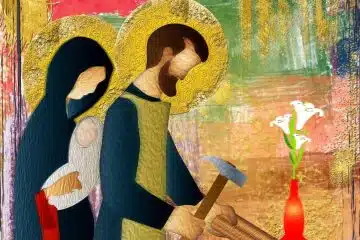The Catholic Moment: Spousal love and priestly celibacy
February 4, 2011
By Father Kyle Schnippel
In the early parts of his papacy, Pope John Paul II delivered a series of Wednesday catechesis talks on spousal love. Built on his reflections of the first chapters of the Book of
Genesis and refined during his trips as a young priest and bishop in Kracow, these talks have been coalesced into a systematic series of theology, collectively known as the Theology of the Body. Groundbreaking in their scope of thought, these talks are beginning a revolution in Catholic thought, especially in our understanding of the theology of marriage and the mutual gift of self contained there-in. In many ways, Pope John Paul II’s Theology of the Body gives the theological underpinnings for the teachings expressed in Pope Paul VI’s 1968 encyclical Humanae Vitae.
However, because of the broad scope of these teachings, there is also an application to the church’s understanding of the theology of the priesthood, and of one particular aspect of the priesthood in the Latin Rite: celibacy. In fact, Pope John Paul II spent an entire section of his Theology of the Body on celibacy, for he saw spousal love and priestly celibacy as complimentary.
This raises the question of how these two seeming opposites are related. To answer it, we have to turn back to Humanae Vitae. In this document on the regulation of birth in marriage, Pope Paul VI has as his basis the recognition that every person is called to a life of fruitfulness, no matter his or her vocation. For married couples, this is naturally through the begetting of children. However, some couples are either incapable of childbearing or are beyond the normal age of childbearing; they are still called to a fruitfulness of life. This also applies to single men and women, as well as to those in a consecrated state of celibacy: men and women religious, priests and bishops. We are all called to give life. Pope John Paul II’s reflections in the Theology of the Body help each one, according to his or her state of life, to recognize the unique way that God makes this invitation.
What Pope John Paul II recognized is that to freely embrace a life of celibacy does not mean forsaking one’s sexuality, but rather is an essential aspect of a total offering of self to the Other for the sake of the kingdom. This becomes the source of the priest’s generativity, not in a physical sense, but in the spiritual. Through his ongoing offering of self, he is able to beget spiritual life and nourishment for his people, who, not through accident, call him ‘Father.’
Our terms are not accidental, but point to something significant. As Pope John Paul II delved deeper into the theology of spousal love, he helped clarify the connections between spousal and celibate love, as is quoted in the Rite of Marriage: “The love of husband and wife is modeled after and symbolizes the love of Christ for His church.”
In this, we are able to see a fulfillment from the Second Vatican Council: “Man… cannot truly find himself except through a sincere gift of self” (Gaudium et Spes 24).
In the great wisdom of the church, by studying spousal love, we learn more about priestly celibacy as complimentary to the love of a husband and wife. In this view, priestly celibacy is no longer seen as a burden imposed on the priest, but as a free gift of self for the sake of his brothers and sisters in Christ, and the hallmarks of Christian love — faithfulness, fruitfulness and totality — are seen as constitutive elements of both married and celibate life.
What a great gift God has given us through these teachings.









